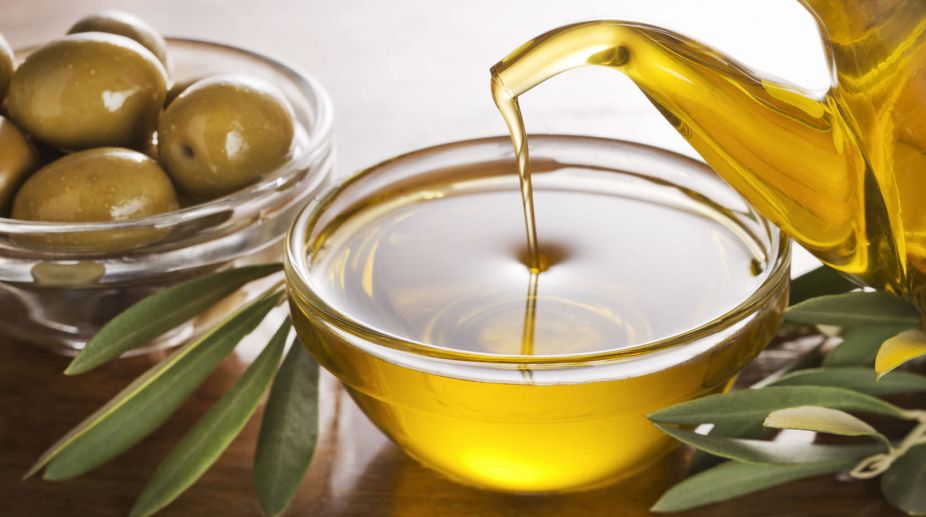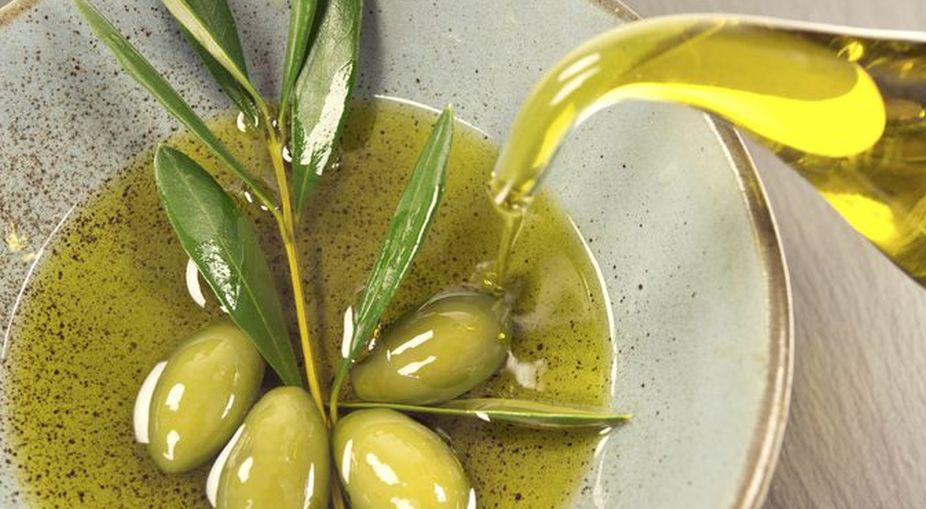How Patanjali products can protect you against Delhi pollution
Protect yourself from Delhi pollution with Patanjali's natural products, including face masks, immune boosters, and skincare remedies.
Olive oil is an essential fruit oil used by mankind for many centuries, make optimum use of it with wisdom.

Olive Oil (Photo Source: Getty Images)
Olive oil plays a big part of the diet people now eating across the world. It is a staple ingredient for many culinary preparations and also serves a variety of medicinal and cosmetic purposes.
Olive oil is packed with anti-inflammatory properties and omega-3 fatty acids which improve good cholesterol (HDL). Besides this, the health benefits include the treatment of colon and breast cancer, diabetes, heart problems and arthritis. It also aids in weight loss, improves metabolism and digestion, lowers hypertension, strengthens cell walls, delays aging and prevents gallstones and inflammation. Rich in antioxidants, vitamin K and vitamin D, this fruit oil boasts a very good nutritional profile.
There are different types of olive oil available in the market. If we go by the trade standard applying to olive oils by the International Olive Oil Council (IOOC), there are five varieties of olive oil. All olive oils are not created equal. Now the question is that which olive oil suits for which purpose. The answer is simple. First – know the types of olive oil available. Second – consider what you will use it for. Third – know the characteristics of different grades and then read the labels carefully to select the type of oil that will best suit your intended purpose.
Advertisement
Different varieties of olive oil:
Extra virgin olive oil

The extra virgin olive oil variety contains the highest level of antioxidant polyphenols and oleic acid. It is thus a healthier option compared to other vegetable oils. However, it should be used in moderate quantity as it has lots of calories. The Food and Drug Administration recommends two tablespoons every day for the best health results. It is obtained mechanically within the use of chemicals or excessive heat. A high-quality extra virgin olive oil is perfect as a condiment drizzled over salads, bread, steamed vegetables, meat, fish or baked potatoes. This oil is always left unheated. So, you can reap the benefits of its natural flavour and aroma and also its health benefits. You may use your imagination to create various mixes of flavours using unheated extra virgin olive oil. Derived from the first press of olives, this oil is the highest quality and most expensive type of olive oil. As it has a very low smoking point, it is not recommended for deep frying. The low smoking point means even if it is cooked at very low temperatures, it could burn. If you use it for sautéing vegetables, the vitamins can get destroyed. So, use it only to make the dressings for salads or just drizzle it on top of cold dishes. It tends to have a greener colour and a more pronounced fruity aroma.
Virgin olive oil

Virgin olive oil is obtained from the olive fruit through mechanical or other physical means in thermal conditions which do not alter the oil at all. It is a pure form of olive fruit juice because it is unrefined and no chemicals or heat is used while extracting it. The only difference between extra virgin olive oil and virgin olive oil is a slightly higher oleic acidity level. It can be used for cooking your favourite dishes, sautéing vegetables and baking. As it also has a low smoking point like extra virgin olive oil, it is not recommended for deep frying.
Refined olive oil

Refined olive oil is obtained by treating low-quality virgin olive oil by using charcoal and other chemical and physical filters. However, no solvents are used in the refining process. It is cheaper than extra virgin or virgin olive oil and also inferior in terms of vitamins, nutrients, taste and flavour. Yet it is suitable for cooking purposes.
Pure olive oil

This form is obtained by blending together refined olive oil and extra virgin olive oil. It is also lower in nutritional value as compared to virgin olive oil. It is not preferable for cooking as it has a disliking smell and flavour when it is heated. It is good to use on hair and skin.
Olive Pomace oil

This form of olive oil is obtained by treating pomace (the ground flesh and pits left after the extraction process) with solvents or other physical treatments. So, it is a blend of virgin olive oil and refined pomace oil. It is the lowest grade of olive-based oils but to make it sell in the market, producers blend it with virgin olive oil to give it mild flavour and aroma. The virgin olive oil content is generally very low. It lacks a significant amount of vitamins and polyphenols. Though inexpensive it is best avoided for cooking purpose. As it is cheap, people use it to burn in an oil lamp.
Olive oil won’t have any beneficial effects if not used in the right way. It is up to you to make it healthier for you. The flavour can vary based on the olive trees, the growing region, the time of harvest and the extraction process itself.
Olive oil is best for pan frying but it is not ideal for deep frying because it has a very low smoke point and will overheat. If you are looking for a healthy oil for deep frying, canola is a great option.
Genuine extra virgin olive oil is expensive, however, don’t settle for a cheaper option.
Things to be kept in mind while buying and storing extra virgin olive oil:
Cook healthy, eat healthily, stay healthy!
Advertisement